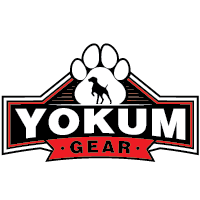Dog agility is a fast-paced, exciting sport that enhances the bond between a dog and its owner while providing excellent physical and mental stimulation for both. If you’re interested in introducing your furry friend to this engaging activity, finding the right local dog agility training class is crucial. This article will guide you through the process, ensuring you and your dog have a rewarding experience.
Why Dog Agility Training?
Before diving into the search, it's essential to understand why dog agility training can be immensely beneficial:
- Enhanced Physical Exercise: Agility courses provide a varied and comprehensive workout.
- Mental Stimulation: Navigating an agility course requires concentration and problem-solving.
- Strengthening the Bond: Training together enhances communication and trust between you and your dog.
- Socialization: Classes provide opportunities for your dog to interact with other dogs and people.
Steps to Find Local Dog Agility Training Classes
1. Start with Online Research
The internet is a valuable resource for finding local agility classes. Begin your search by typing dog agility training classes near me into your preferred search engine. Visit websites of training centers, read reviews, and jot down the places that seem promising. Don't forget to check social media platforms and community forums for additional recommendations.
2. Check Local Pet Stores and Veterinary Clinics
Many pet stores and veterinary clinics have bulletin boards or flyers promoting local services, including dog agility classes. Staff members at these establishments are often well-connected within the community and can provide recommendations based on their knowledge and customers' feedback.
3. Ask Fellow Dog Owners
If you frequent dog parks or have friends with dogs, ask them if they know of any good agility training classes. Personal recommendations from other dog owners can be invaluable, giving you insights into what to expect from various places.
4. Attend Local Dog Events
Dog shows, agility competitions, and pet expos are excellent venues to gather information. Not only will you see agility in action, but you may also meet trainers and organizations offering classes. Networking at these events can lead to finding a well-suited training program.
5. Evaluate Credentials
Once you have a list of potential training facilities, it's essential to evaluate the credentials of the trainers. Look for certifications from reputable organizations, such as the Association of Professional Dog Trainers (APDT) or the American Kennel Club (AKC). Qualified trainers should have a deep understanding of dog behavior and training techniques.
6. Visit the Facility
Before committing to a class, visit the training facility. Observe a session to see the interaction between the trainers, dogs, and owners. Ensure the environment is safe, clean, and well-organized. A good facility will encourage positive reinforcement and should have all the necessary equipment for agility training.
7. Assess Class Structure and Size
Consider the class size and structure. Smaller classes tend to offer more personalized attention, which can be beneficial, especially if your dog is a beginner. Understand the levels offered (beginner, intermediate, advanced) and whether the trainers can tailor their approach to suit your dog’s specific needs.
8. Costs and Schedule
Compare the costs of different classes and their schedules. Ensure that the class times align with your availability and that the pricing is transparent without hidden fees. Some facilities may offer introductory sessions at a reduced rate or even free trials to help you determine if the class is a good fit.
9. Commitment to Positive Reinforcement
Agility training should be fun and rewarding for your dog. Ensure the trainers use positive reinforcement techniques, such as treats, praise, and play, rather than punitive methods. Positive reinforcement fosters a healthy learning environment and builds your dog's confidence.
Conclusion
Finding the right dog agility training class requires thorough research and careful consideration. By following these steps, you can locate a program that suits your needs and offers a supportive environment for your dog. Remember, agility training is not just about competition; it’s about having fun and growing together with your canine companion.
Invest the time in finding a great class, and you’ll be on your way to enjoying the many benefits that dog agility training has to offer!

